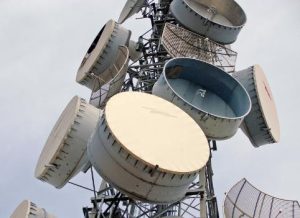Why Are Microwaves Ideal for Satellite Communication?
Microwaves Excel in High-Frequency Communication
Microwaves, a form of electromagnetic radiation with wavelengths ranging from one meter to one millimeter, or frequencies between 300 MHz and 300 GHz, stand out as the preferred medium for satellite communication. This high-frequency range is particularly effective because it allows microwaves to carry large amounts of data over significant distances without degradation.

Minimal Interference and High Penetration
One of the primary reasons microwaves are superior for satellite communication relates to their ability to penetrate the earth’s atmosphere with minimal interference. Unlike lower frequency radio waves, which can be absorbed or reflected by atmospheric components like moisture and rain, microwaves can travel relatively unaffected. This characteristic ensures more reliable communication links, which are crucial for the consistent transmission of data from space to Earth.
Direct Line of Sight Transmission
Satellite communication requires a clear line of sight between the transmitting and receiving antennas. Microwaves are ideal for this purpose because their shorter wavelengths allow for the transmission of signals in narrow beams. This direct beam targeting significantly reduces the risk of signal interference and eavesdropping, enhancing the security and integrity of the transmitted data.
Capacity and Bandwidth Advantages
The higher frequencies of microwave signals also allow for a wider bandwidth, which translates to a higher data transfer rate. This is a significant advantage in satellite communications, where large volumes of data need to be transmitted quickly and efficiently. For instance, modern communication satellites can use frequencies like the K-band, ranging from 18 to 27 GHz, to support broadband services that require high data rates.
Optimized for Modern Technology
Today’s satellite communication technologies increasingly rely on microwaves due to their compatibility with digital transmission techniques. Digital data, including high-definition television broadcasts and secure military communications, depends on the robustness and high bandwidth that microwave frequencies provide. These characteristics ensure that data is transmitted not only quickly but also with reduced error rates, thanks to advanced error-correcting algorithms that work well within the microwave spectrum.
Key Considerations
When considering why are microwaves ideal for transmitting satellite communication, it’s essential to recognize their role in facilitating global connectivity. Microwaves enable satellites to provide seamless coverage across large areas, making them indispensable for global telecommunications networks, weather forecasting, GPS systems, and even in defense applications. The ability of microwaves to operate under various atmospheric conditions without interference ensures that satellite communication remains robust and widely accessible.
In conclusion, microwaves offer several distinct advantages that make them the optimal choice for satellite communication. Their ability to transmit high-frequency signals with minimal loss and interference, coupled with high bandwidth capacity and suitability for digital data, ensures efficient and secure global communication. These characteristics underscore why microwaves remain central to the advancement of global satellite communication infrastructures.
